Deep beneath the Earth’s surface lies a dark treasure with stories spanning millions of years – black shale. This mysterious rock formation not only holds the key to understanding our planet’s ancient past but also plays a crucial role in our energy future. From housing vast reserves of natural gas and oil to containing precious metals, black shale’s economic significance is as rich as its geological composition. Discover how this unassuming dark rock formed in ancient seas has shaped economies and could determine the future of global energy resources.
Table of Contents
What is Black Shale?
Black shale is a fine-grained, dark-colored sedimentary rock rich in organic matter, carbon, and trace metals. It forms in low-oxygen environments such as deep-sea basins, where organic material accumulates over millions of years. This rock is a key source of oil, natural gas, and valuable metals like uranium, vanadium, and zinc. Due to its economic importance in the energy and mining industries, black shale plays a crucial role in hydrocarbon exploration and metal extraction worldwide.
In this comprehensive article about black shale, you will learn about this fascinating sedimentary rock that plays a crucial role in our energy economy. We’ll explore its formation process in oxygen-poor environments, examine its unique physical and chemical properties, and understand why it’s such a valuable resource for oil, gas, and metal mining industries worldwide.
You’ll discover the key differences between black shale and coal, explore major black shale deposits across the globe, and understand the specific environments where this important rock forms. Whether you’re interested in geology, energy resources, or environmental science, this article provides valuable insights into black shale’s composition, economic importance, and geological significance.
By the end, you’ll understand why black shale continues to be a critical resource for global energy security and how its unique properties make it an essential subject of study for geologists and resource economists alike
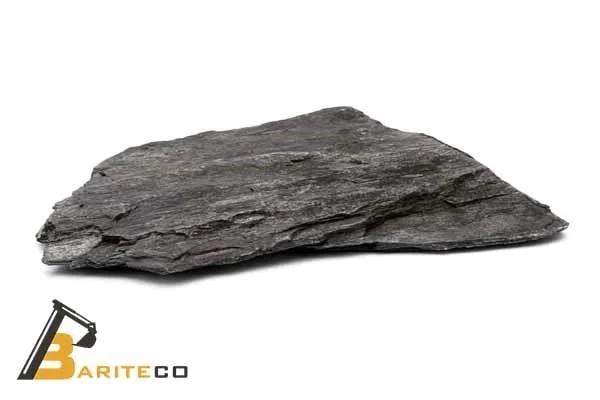
How Does Black Shale Form?
Black shale forms in low-oxygen environments where organic material accumulates and is preserved over millions of years. The formation process is complex and occurs through several distinct stages:
1. Organic Matter Deposition
Dead marine organisms, algae, and plant material settle at the bottom of oceans or lakes.
2. Sediment Accumulation
Layers of fine-grained sediment, such as clay and silt, build up, covering the organic matter.
3. Anoxic Conditions
Limited oxygen prevents decomposition, allowing organic carbon to be preserved.
4. Compaction & Changes
Over time, pressure compacts the sediments, and chemical reactions enrich the rock with pyrite and trace metals.
This process makes black shale a major source rock for hydrocarbons and an important host for metals like uranium, vanadium, and zinc. The anoxic (oxygen-free) environment is crucial for preserving organic matter that would otherwise decompose in oxygen-rich settings.
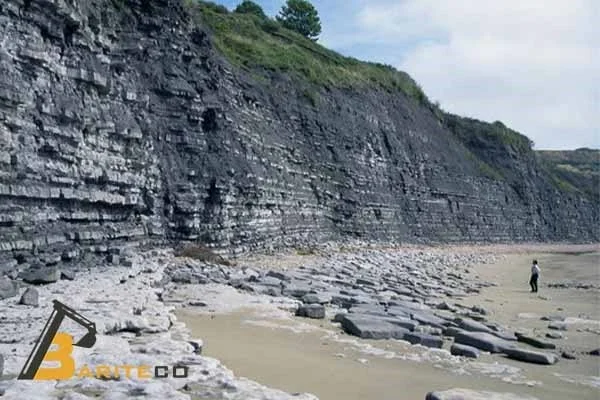
Black Shale Depositional Environment
The unique depositional environments that produce black shale offer fascinating windows into Earth’s ancient oceans and climate systems. Understanding these environments is crucial for identifying potential hydrocarbon reserves and reconstructing paleoclimatic conditions. Black shale formation requires specific environmental conditions that diverge dramatically from normal marine settings. These environments share a critical feature: oxygen deficiency at the sediment-water interface, allowing organic matter preservation rather than decomposition
Primary Black Shale Depositional Settings
Black shale forms in diverse depositional settings, such as euxinic basins, silled basins, upwelling zones, epicontinental seas, and stratified lake basins, where oxygen-depleted conditions preserve organic matter and lead to its accumulation.
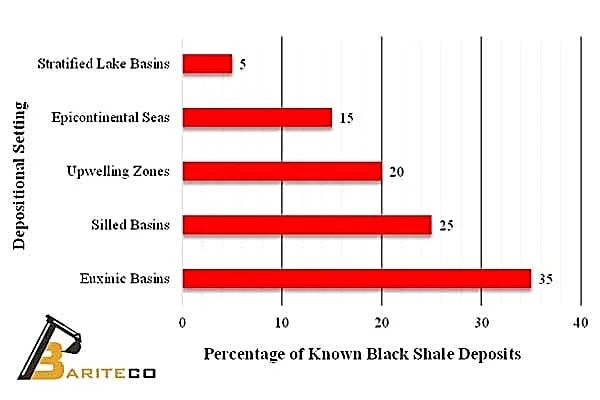
1. Euxinic Basins
Euxinic basins represent the most extreme anoxic environments, characterized by both oxygen depletion and hydrogen sulfide accumulation in the water column. Modern examples include the Black Sea and Cariaco Basin (Venezuela).
Key indicators: High pyrite content, enriched trace metals (Mo, V, Zn), and sulfur isotope patterns showing bacterial sulfate reduction.
2. Silled Basins with Restricted Circulation
Physical barriers (sills) restrict water exchange with the open ocean, creating stratified water columns where bottom waters become oxygen-depleted. The Mediterranean’s Eastern Basin during sapropel formation exemplifies this setting.
Geological signature: Rhythmic black shale-limestone alternations reflecting cyclic oxygenation changes.
3. Upwelling Zones With Oxygen Minimum Layers
Coastal upwelling brings nutrient-rich deep waters to the surface, stimulating high biological productivity. The resulting organic matter flux consumes oxygen in midwater, creating an oxygen minimum zone (OMZ) where black shales can form.
Modern analogues: Peruvian and Namibian continental shelves, with extensive fisheries supported by the same productivity that creates oxygen-poor conditions.
4. Epicontinental Seas During Transgressive Events
During major sea-level rises (transgressions), shallow seas flood continental interiors. Restricted circulation in these settings, combined with warm climate periods, can trigger extensive black shale deposition across vast areas.
Historical example: The Late Devonian-Early Mississippian epeiric seas that produced the Chattanooga and New Albany Shales across central North America.
5. Stratified Lake Basins
Not all black shales form in marine settings. Deep, stratified lakes can develop permanent anoxic bottom waters, preserving organic matter and forming lacustrine black shales. These deposits often show seasonal laminations (varves).
Distinctive features: Freshwater biological markers, absence of marine fossils, and association with terrestrial sediments
Critical Factors Controlling Black Shale Formation
Black shale formation is influenced by key factors such as high organic productivity, water stratification, balanced sedimentation rates, and restricted oceanic circulation, all of which create the oxygen-poor conditions necessary for organic matter preservation.
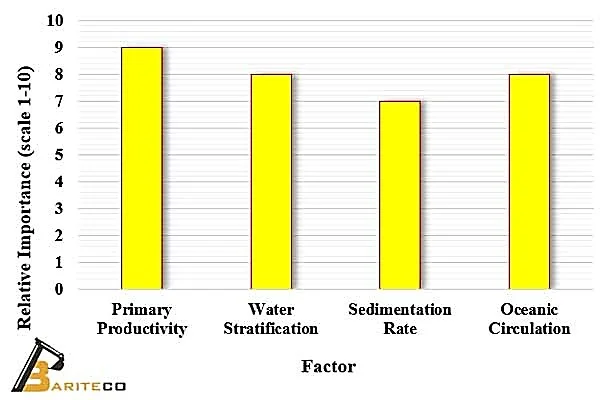
Primary Productivity
High surface productivity creates organic matter flux to seafloor, supplying carbon necessary for black shale formation. Nutrient-rich conditions typically drive this productivity.
Water Stratification
Density differences between water masses prevent vertical mixing, isolating bottom waters from oxygen recharge. Temperature and salinity differences maintain this stratification.
Sedimentation Rate
Optimal black shale formation requires balanced sedimentation—fast enough to preserve organic matter but slow enough to prevent excessive dilution by mineral matter.
Oceanic Circulation
Restricted circulation prevents oxygen replenishment in bottom waters. Basin morphology, sea level, and global climate patterns all influence circulation patterns.
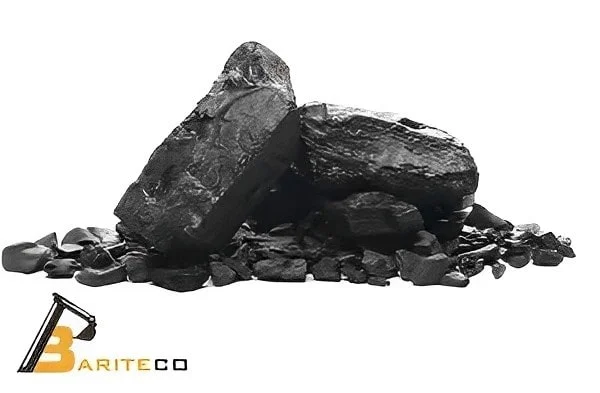
Characteristics of Black Shale
Black shale has distinct physical and chemical properties that make it important in geology, energy production, and mining. These characteristics contribute to its economic and scientific value:
- Dark Color: Rich in organic carbon, giving it a black or dark gray appearance.
- Fine-Grained Texture: Composed of microscopic clay and silt particles.
- High Organic Content: Contains preserved plant and marine material, making it a source rock for oil and gas.
- Pyrite Presence: Often includes pyrite (fool’s gold) due to chemical reactions in low-oxygen environments.
- Metal Enrichment: Hosts valuable metals such as uranium, vanadium, molybdenum, nickel, and zinc.
- Fissility: Easily splits into thin layers due to its compacted structure.
Why is Black Shale Important?
Black shale plays a crucial role in energy production, mining, and environmental science due to its rich organic and mineral content. Key reasons for its importance include:
- Oil and Gas Source Rock: Black shale generates and releases hydrocarbons, making it vital for petroleum exploration.
- Metal Enrichment: It hosts economically valuable metals such as uranium, vanadium, nickel, and zinc, supporting global mining industries.
- Carbon Sequestration: Stores large amounts of organic carbon, influencing climate regulation.
- Shale Gas and Oil Production: Advances in hydraulic fracturing (fracking) have made black shale a major source of unconventional energy.
- Geological Indicator: Helps scientists study past environmental conditions and mass extinctions.

Where is Black Shale Found?
Black shale deposits are found worldwide, often associated with hydrocarbon reserves and metal-rich formations. Major locations include:
- United States: Appalachian Basin, Marcellus Shale.
- China: South China Basin, rich in shale gas.
- Iran: Various sedimentary basins with petroleum potential.
- Canada: Western Canadian Sedimentary Basin.
- Russia: Large black shale formations with significant metal content.
- Europe: Poland and Sweden have deposits containing rare metals.
These widespread formations make black shale a critical resource for global energy and mining industries.
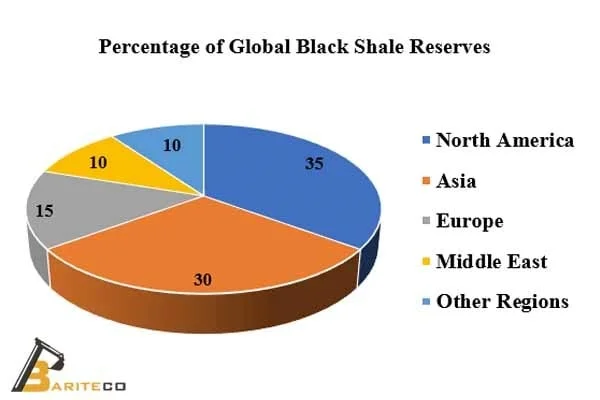
Black Shale Deposits
Black shale deposits represent some of Earth’s most economically valuable sedimentary formations. These carbon-rich rocks, formed millions of years ago in ancient seas, contain significant reserves of hydrocarbons and critical minerals essential for modern industry.
Economically Significant Black Shale Formations
Black shale formations around the world, including North American, European, and Asian deposits, hold vast reserves of hydrocarbons and critical minerals, making them economically significant targets for exploration and production.
North American Deposits
- Bakken Formation (USA/Canada): Spanning North Dakota and Saskatchewan, this formation produces over 1.1 million barrels of oil daily through hydraulic fracturing.
- Barnett Shale (Texas): The “grandfather” of shale gas plays, revolutionizing extraction technologies in the 1990s.
Monterey Formation (California): Contains distinctive phosphatic black shales with high biogenic silica content
European Deposits
- Alum Shale (Scandinavia): Uranium-rich black shale extending across Sweden and Norway, mined historically for alum and more recently for metals.
- Posidonia Shale (Germany): A Jurassic formation renowned for exceptional fossil preservation and petroleum potential.
Mecca Quarry Shale (UK): Contains distinctive faunal assemblages offering insights into Carboniferous marine ecosystems
Asian Deposits
- Longmaxi Formation (China): The primary target for shale gas exploration in China, with estimated reserves exceeding 31 trillion cubic meters.
- Bazhenov Formation (Russia): The world’s largest oil shale reserve, containing an estimated 2 trillion barrels of oil.
- Sargelu Formation (Middle East): An important source rock for much of the region’s conventional petroleum reservoirs.

Modern Exploration Technologies
Today’s black shale exploration utilizes sophisticated technologies including 3D seismic imaging, microseismic monitoring, and advanced geochemical analysis to identify optimal drilling locations. Machine learning algorithms now help predict productivity zones, reducing exploration costs by up to 30% compared to traditional methods.
What is the Composition of Black Shale?
Black shale is a distinct fine-grained sedimentary rock characterized by its dark color, laminated structure, and rich organic content. Its unique composition results from deposition in oxygen-poor environments where organic matter preservation is enhanced. Understanding black shale composition provides valuable insights into ancient environmental conditions and explains its economic importance as a hydrocarbon source rock and mineral reservoir.
Major Components of Black Shale
Black shale consists of organic matter, clay minerals, pyrite, and silica, each playing a crucial role in its formation, characteristics, and economic value as a source rock for hydrocarbons.

Organic Matter (5-20%)
- Organic Carbon: Derived from ancient algae, plant material, and marine organisms that accumulated in oxygen-poor environments.
- Kerogen: Complex macromolecular material that transforms into hydrocarbons (oil and gas) when exposed to heat and pressure during burial.
- Economic Significance: Principal component that makes black shale a valuable source rock for petroleum exploration.
The high organic content gives black shale its characteristic dark coloration and makes it distinguishable from other sedimentary rocks.
Clay Minerals (30-70%)
- Illite: Often dominant clay mineral that contributes to the rock’s fissility and layered structure.
- Kaolinite: Indicates weathering processes in the source area during deposition.
- Chlorite: Common in marine black shales, formed under reducing conditions.
- Smectite: Present in varying amounts depending on depositional environment.
These fine-grained minerals form the matrix of black shale and determine many of its physical properties.
Pyrite (2-10%)
- Formation: Precipitates in anoxic environments through bacterial sulfate reduction.
- Appearance: Often found as microcrystalline particles or framboidal (raspberry-like) clusters.
- Indicator Value: High pyrite content confirms reducing (oxygen-poor) conditions during deposition.
Pyrite contributes to the dark color of black shale and serves as the principal source of sulfur within the rock.
Silica (15-30%)
- Forms: Primarily as detrital quartz grains and biogenic silica (from radiolarians, diatoms, etc.).
- Physical Properties: Contributes to the rock’s hardness and resistance to weathering.
- Fracture Behavior: Influences how the shale fractures, which is critical for hydrocarbon extraction.
The silica content affects mechanical properties and can determine how effectively the shale can be hydraulically fractured during gas extraction.
Secondary and Trace Components
In addition to its major constituents, black shale contains carbonate minerals and various trace elements such as uranium, vanadium, nickel, molybdenum, zinc, copper, and phosphorus, which provide economic value and valuable insights into its depositional environment.
Carbonate Minerals (0-10%)
Calcite and dolomite occur in variable amounts in black shale, particularly in marine depositional environments. Higher concentrations indicate periods of increased biological productivity or changing depositional conditions. The carbonate content influences the rock’s response to acidization techniques used in petroleum production.
Did you know? The carbonate content in black shale can provide valuable information about ancient ocean chemistry and carbon cycling processes.
Trace Elements and Metals
Black shale is often enriched in various trace elements that provide both economic value and scientific information about depositional conditions:
| Element | Typical Concentration | Origin | Significance |
| Uranium | 10-100 ppm | Seawater enrichment, organic complexation | Potential resource, radiometric marker, indicates reducing conditions |
| Vanadium | 100-500 ppm | Organic complexation, redox concentration | Industrial applications, paleoenvironmental indicator |
| Nickel | 50-200 ppm | Organic matter association, sulfide precipitation | Catalytic properties, associated with high organic content |
| Molybdenum | 20-100 ppm | Seawater enrichment under anoxic conditions | Strong indicator of euxinic (H₂S-rich) depositional environments |
| Zinc | 100-300 ppm | Sulfide precipitation, bacterial activity | Industrial resource, paleoenvironmental indicator |
| Copper | 40-150 ppm | Organic complexation, sulfide minerals | Industrial applications, redox indicator |
| Phosphorus | 0.1-3% | Biological activity, upwelling zones | Fertilizer production, indicates high productivity |
Compositional Variations by Depositional Environment
The specific composition of black shale varies significantly based on the depositional environment, which affects both the mineral assemblage and organic matter content:
| Environment | Distinctive Compositional Features | Examples |
| Deep Marine Basin | Higher clay content (>50%), enriched in V and Mo, moderate organic content (5-15%), lower carbonate | Chattanooga Shale (USA), Posidonia Shale (Germany) |
| Epicontinental Sea | Moderate carbonate content (5-10%), higher organic matter (10-20%), enriched in uranium | Marcellus Shale (USA), Kimmeridge Clay (UK) |
| Lacustrine (Lake) | Variable clay content (30-60%), high organic matter (up to 25%), lower trace metal content | Green River Formation (USA), Songliao Basin shales (China) |
| Coastal/Deltaic | Higher silica content (20-40%), moderate organic content (5-15%), elevated sulfur minerals | Barnett Shale (USA), Longmaxi Shale (China) |
These compositional variations serve as crucial indicators for reconstructing ancient depositional environments and predicting hydrocarbon potential.
Significance of Black Shale Composition
The unique composition of black shale creates multiple scientific and economic applications:
- Energy Resources: Rich organic content makes black shale the primary source rock for petroleum and natural gas, with kerogen quality and quantity determining hydrocarbon potential.
- Mineral Resources: Elevated concentrations of uranium, vanadium, and other metals create additional economic opportunities beyond energy production.
- Environmental Studies: Trace element patterns offer insights into ancient oceanic chemistry, atmospheric oxygen levels, and climate conditions.
- Geological History: Compositional variations across different black shale deposits help reconstruct Earth’s ancient environments and biological evolution.
Understanding black shale composition is essential for resource exploration, extraction efficiency, environmental assessment, and advancing our knowledge of Earth’s complex geological history.
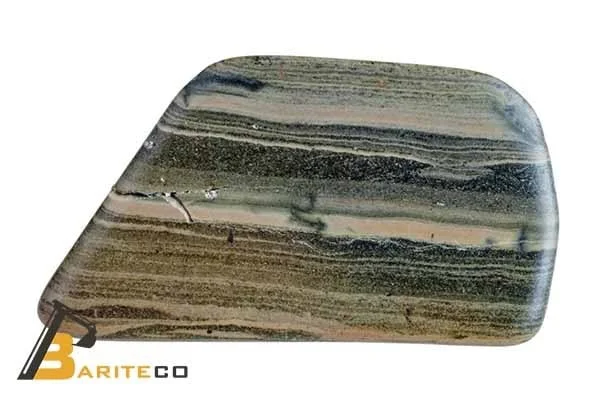
Black Shale vs Coal: Key Differences and Similarities
Both black shale and coal are sedimentary rocks with organic origins, yet they differ significantly in composition, formation processes, and economic uses. This comparison examines their distinctive characteristics and shared attributes, highlighting their respective roles in geology and resource extraction.
What is Black Shale?
Black shale is a fine-grained sedimentary rock characterized by its dark color due to high organic content. It typically forms in low-oxygen (anoxic) environments such as deep ocean basins and stagnant lakes where organic matter can accumulate without rapid decomposition. Rich in minerals like pyrite and various trace metals, black shale serves as an important source rock for hydrocarbons in petroleum systems.
The organic material in black shales derives primarily from marine organisms, algae, and plant matter that settled in oxygen-poor waters. Over time, these deposits undergo diagenesis and catagenesis, potentially generating oil and natural gas under appropriate temperature and pressure conditions.
What is Coal?
Coal is a combustible, carbon-rich sedimentary rock formed from the remains of ancient plant material accumulated in swamp or bog environments. Through a process called coalification, dead vegetation is subjected to heat and pressure over millions of years, transforming peat into increasingly carbon-concentrated coal varieties (lignite, sub-bituminous, bituminous, and anthracite).
Unlike black shale, coal forms in terrestrial settings where plant matter accumulates in waterlogged conditions that prevent complete decomposition. Its composition is dominated by carbon compounds derived from plant tissues, with varying amounts of hydrogen, oxygen, nitrogen, and sulfur depending on coal rank and original plant material.
Key Differences Between Black Shale and Coal
| Characteristic | Black Shale | Coal |
| Formation Environment | Anoxic marine or lacustrine settings with limited oxygen circulation | Swamps, bogs, and other wetland environments with abundant plant growth |
| Primary Material | Marine organisms, algae, mixed with clay and silt minerals | Terrestrial plant matter (trees, ferns, mosses) |
| Composition | Clay minerals (30-70%), organic matter (5-20%), silica (15-30%), pyrite (2-10%), trace metals | Carbon (65-95%), hydrogen, oxygen, nitrogen, sulfur, and mineral matter |
| Economic Use | Source rock for oil and natural gas; potential source of uranium, vanadium, and other metals | Direct fuel for electricity generation, steel production, and various industrial processes |
| Color and Texture | Dark gray to black, fine-grained, often laminated, tends to split along bedding planes | Brown to black, banded appearance, varying texture based on coal rank |
| Typical Geological Age | Found in formations from Ordovician to Devonian periods, though can occur in other periods | Most abundant in Carboniferous and Permian formations, with some younger deposits |
| Carbon Content | Generally lower (5-20% organic carbon) | Much higher (65-95% depending on coal rank) |
Similarities Between Black Shale and Coal
Despite their differences, black shale and coal share several important characteristics:
Organic Origin: Both form from the accumulation and preservation of organic material, though from different sources and environments.
Formation Process: Both undergo burial, compaction, and thermal maturation over millions of years, albeit resulting in different end products.
Energy Significance: Both play crucial roles in the global energy landscape black shale as a source rock for oil and gas formation, coal as a direct fuel source.
Geological Importance: Both serve as important markers in stratigraphy and provide valuable information about past environmental conditions and Earth’s history.
Economic Value: Both represent significant resources with substantial economic importance across various industries and world economies.
Conclusion
Black shale and coal represent two distinct types of organic-rich sedimentary rocks that have shaped human civilization through their energy applications. While black shale forms in oxygen-poor aquatic environments and serves primarily as a source rock for petroleum systems, coal develops from accumulated plant matter in wetland settings and functions as a direct fuel source. Understanding their differences and similarities provides valuable insights into Earth’s geological processes and the formation of crucial energy resources that continue to power our modern world.
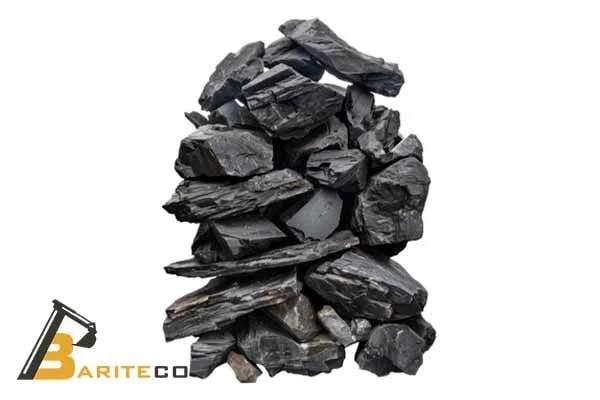
Conclusion
Black shale is a significant sedimentary rock with high economic and environmental importance. It serves as a source rock for oil and gas, hosts valuable metals like uranium, vanadium, and zinc, and contributes to carbon sequestration. Its formation in anoxic environments makes it a key player in energy production and mineral exploration, impacting global industries. As technology advances, particularly in hydraulic fracturing, black shale formations continue to grow in importance for global energy security and mineral resources.
FAQ’s
1. Why is shale black?
Shale appears black due to its high organic carbon content and the presence of sulfide minerals like pyrite. When organic material accumulates in low-oxygen environments, it prevents decomposition, leading to a dark coloration.
2. Is black shale a source of oil and gas?
Yes, black shale is a major source rock for oil and natural gas. Over millions of years, heat and pressure convert the organic material within black shale into hydrocarbons, which can migrate into reservoirs.
3. What metals are found in black shale?
Black shale often contains uranium, vanadium, nickel, molybdenum, zinc, and copper, making it a valuable resource for metal mining.
4. Where is black shale commonly found?
Significant black shale deposits exist in the United States, China, Iran, Canada, and Russia, often associated with petroleum and metal-rich formations.
5. What industries use black shale?
Black shale is essential in oil and gas exploration, mining, and environmental studies due to its role in hydrocarbon production, metal enrichment, and carbon sequestration.
6. What is black shale used for?
Black shale is primarily used as a source rock for oil and natural gas, due to its high organic carbon content. It is also mined for metals like uranium, vanadium, nickel, and zinc. Additionally, black shale can be used in carbon sequestration studies and is important in geological research for understanding past environmental conditions.
What did you think about our exploration of black shale’s formation, composition, and economic significance? Share your experiences or questions about this fascinating geological resource in the comments below.
